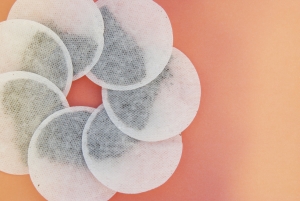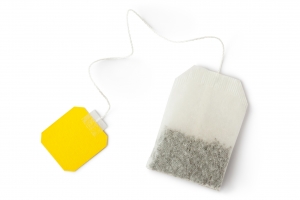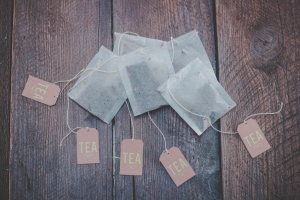A Brief History
Discover the ancient origins and fascinating history of tea!
This section covers the origins and adoption of the humble tea bag.
 The arrival of tea in Britain in the seventeenth century altered the drinking habits of this nation forever. The late eighteenth century saw black tea overtake green tea in popularity for the first time, which also accelerated the addition of milk. In the nineteenth century widespread cultivation of tea in India began, leading to the imports of Indian tea into Britain overtaking the imports of Chinese tea. And in the twentieth century there was a further development that would radically change our tea-drinking habits - the invention of the tea bag.
The arrival of tea in Britain in the seventeenth century altered the drinking habits of this nation forever. The late eighteenth century saw black tea overtake green tea in popularity for the first time, which also accelerated the addition of milk. In the nineteenth century widespread cultivation of tea in India began, leading to the imports of Indian tea into Britain overtaking the imports of Chinese tea. And in the twentieth century there was a further development that would radically change our tea-drinking habits - the invention of the tea bag.
popular infusers included tea eggs and tea balls
The purpose of the tea bag is rooted in the belief that for tea to taste its best, the leaves ought to removed from the hot water at the end of a specific brewing period. Then there is the added benefit of convenience - a removable device means that tea can be made as easily in a mug as in a pot, without the need for a tea strainer, and that tea pots can be kept clean more easily. But the earliest examples of removable infusing devices for holding tea were not bags. Popular infusers included tea eggs and tea balls - perforated metal containers which were filled with loose leaves and immersed in boiling water, and then removed using an attached chain.
Needless to say, it was in America, with its love of labour-saving devices, that tea bags were first developed.  In around 1908, Thomas Sullivan, a New York tea merchant, started to send samples of tea to his customers in small silken bags. Some assumed that these were supposed to be used in the same way as the metal infusers, by putting the entire bag into the pot, rather than emptying out the contents. It was thus by accident that the tea bag was born!
In around 1908, Thomas Sullivan, a New York tea merchant, started to send samples of tea to his customers in small silken bags. Some assumed that these were supposed to be used in the same way as the metal infusers, by putting the entire bag into the pot, rather than emptying out the contents. It was thus by accident that the tea bag was born!
Responding to the comments from his customers that the mesh on the silk was too fine, Sullivan developed sachets made of gauze - the first purpose-made tea bags. During the 1920s these were developed for commercial production, and the bags grew in popularity in the USA. Made first of all from gauze and later from paper, they came in two sizes, a larger bag for the pot, a smaller one for the cup. The features that we still recognise today were already in place - a string that hung over the side so the bag could be removed easily, with a decorated tag on the end.
While the American population took to tea bags with enthusiasm, the British were naturally wary of such a radical change in their tea-making methods. This was not helped by horror stories told by Britons who had visited the USA, who reported being served cups of tepid water with a tea bag on the side waiting to be dunked into it (an experience which is still not as uncommon in the USA as it should be!).
 The material shortages of World War Two also stalled the mass adoption of tea bags in Britain, and it was not until the 1950s that they really took off. The 1950s were a time when all manner of household gadgets were being promoted as eliminating tedious household chores, and in keeping with this tea bags gained popularity on the grounds that they removed the need to empty out the used tea leaves from the tea pot. The convenience factor was more important to the British tea-drinker than the desire to control the length of infusion time, hence the appearance of tea bags that did not have strings attached.
The material shortages of World War Two also stalled the mass adoption of tea bags in Britain, and it was not until the 1950s that they really took off. The 1950s were a time when all manner of household gadgets were being promoted as eliminating tedious household chores, and in keeping with this tea bags gained popularity on the grounds that they removed the need to empty out the used tea leaves from the tea pot. The convenience factor was more important to the British tea-drinker than the desire to control the length of infusion time, hence the appearance of tea bags that did not have strings attached.
by 2007 tea bags made up 96 per cent of the British market
It was Tetley in 1953 that drove the introduction of tea bags in Britain, but other companies soon caught up. In the early 1960s, tea bags made up less than 3 per cent of the British market, but this has been growing steadily ever since. By 2007 tea bags made up a phenomenal 96 per cent of the British market, and there can hardly be a home or workplace in Britain that does not have a stash of the humble, but vital, tea bag.